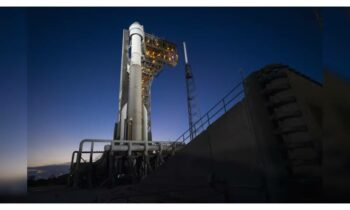
Quiet and powerful, the supermassive black hole at the center of our galaxy is a monster. Sagittarius A, often known as Sgr A, is not entirely inert, though. Every now and then it consumes a star or a glob of molecular gas and becomes a little queasy. which shoots x-ray flares into space.
At 26,000 light-years away, Sgr A* is the closest supermassive black hole to Earth. Because of the strong gravitational attraction of the black hole, it is difficult to study the surroundings. It obscures the vision of surrounding items, making it challenging to perceive them. It is possible to do so, though, by observing how its flares affect neighboring molecular clouds. The centuries-old echoes of previously unidentified flares that happened long before telescopes were available for observation were recently discovered by astronomers. The echoes suggest that Sgr A* eats on a regular basis.
Grace Sanger-Johnson and Jack Uteg, two researchers from Michigan State University, closely examined the flares and their light echoes. What they discovered indicates activity at Sgr A* during its very early history when it consumed material. That activity’s X-ray emissions traveled hundreds of years from Sgr A* to brighten a neighboring molecular cloud by bouncing off of it. As a result, a light echo was produced that took another 26,000 years to arrive at Earth. Thus, Uteg and Sanger were essentially gazing into the past when they examined these flares and light echoes.
Using NuSTAR to Look for Sgr A* X-ray Flares
In order to find any X-ray flares caused by Sgr A*’s eating habits, Sanger-Johnson examined ten years’ worth of data. In the process, she discovered proof of nine further such eruptions.
Most of the time, the flares are really dramatic. Astronomers can examine the immediate surroundings of the black hole because of how luminous they are. Sanger-Johnson’s analysis was based on data from the NuSTAR mission. It focuses on gamma- and high-energy X-ray emissions. Supernova explosions, other active events, and active regions in the center of galaxies are usually the source of them.
A database of Sgr A flares is currently available thanks to the data Sanger-Johnson gathered and examined. “We hope that by building up this bank of data on Sgr A flares, we and other astronomers can analyze the properties of these X-ray flares and infer the physical conditions inside the extreme environment of the supermassive black hole,” stated Sanger-Johnson.
Navigating the Flare Echoes
Jack Uteg, an undergrad, investigated the activity surrounding the black hole while Sanger-Johnson worked with the NuSTAR measurements. He examined data spanning two decades concerning “the Bridge,” a massive molecular cloud. The information was gathered from observations conducted by the European Space Agency’s XMM-Newton observatory and NuSTAR. The Bridge, which is near Sgr A*, is not generally lit by itself.
So, according to Uteg, who is creating a timeline of Sgr A’s previous outbursts, scientists noticed when it brightened up in X-rays. He stated, “The brightness we see is most likely the delayed reflection of past X-ray outbursts from Sgr A,” he said. “We first observed an increase in luminosity around 2008. Then, for the next 12 years, X-ray signals from the Bridge continued to increase until it hit peak brightness in 2020.”
Astronomers were able to determine thanks to Uteg’s study that Sgr A* was around five orders of magnitude brighter in X-rays than it is today. The brightness suggests that a neighboring gas cloud was likely consumed by our center supermassive black hole. Additionally, according to Uteg, the brightness revealed other qualities. “One of the main reasons we care about this cloud getting brighter is that it lets us constrain how bright the Sgr A* outburst was in the past,” he stated.
What Such Bright Echoes from Sgr. A* Indicate
The work of Sanger-Brown and Uteg has given astronomers an alternative method of overcoming the challenges associated with black hole observation. She remarked,“Both flares and fireworks light up the darkness and help us observe things we wouldn’t normally be able to,” “That’s why astronomers need to know when and where these flares occur, so they can study the black hole’s environment using that light.”
Although astronomers are aware that the black hole occasionally eats up surrounding material, new discoveries allow them to place limits on how frequently this occurs and how the surrounding area is affected by the flares that arise. Assistant professor Shuo Zhang of MSU, who led the research on these two investigations, said there are still a lot of unanswered concerns regarding the frequency of these flares and their historical occurrences.
“This is the first time that we have constructed a 24-year-long variability for a molecular cloud surrounding our supermassive black hole that has reached its peak X-ray luminosity,” Zhang stated. It enables us to learn about Sgr A*’s previous activities from roughly 200 years ago. To further solve the mystery surrounding the heart of the Milky Way, our study team at MSU will keep up this “astroarchaeology game.”



